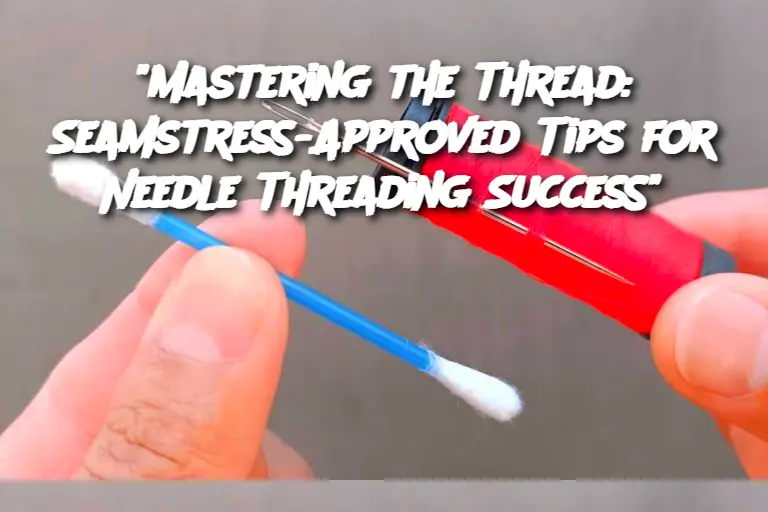ADVERTISEMENT
Introduction
Threading a needle may seem like a small step in sewing, but for many, it’s the most frustrating part. Whether you’re a beginner struggling with tiny eyelets or an experienced seamstress facing finicky thread, mastering this essential skill can save time and patience. In this guide, we’ll break down the tried-and-true methods used by seasoned seamstresses to make threading a needle quick, easy, and even enjoyable.
Ingredients (Tools & Materials):
A good quality needle (hand-sewing or machine needle)
Sharp fabric scissors or thread snips
Quality thread (cotton, polyester, or silk, depending on your project)
Thread conditioner or beeswax (optional)
Needle threader (optional but helpful)
Bright lighting or a desk lamp
Magnifying glass or glasses (if needed)
Directions:
Choose the Right Needle:
Select a needle with an eye large enough for your thread type. Embroidery and chenille needles typically have larger eyes, while sharps and quilting needles are finer.
Cut the Thread Cleanly:
Use sharp scissors to snip the thread at a 45-degree angle. A clean cut prevents fraying and makes it easier to insert into the needle eye.
Moisten or Condition the End:
Lightly moisten the thread end with your lips or use a bit of thread conditioner to stiffen it. This helps guide the thread through the eye smoothly.
Stabilize Your Hands:
Rest your elbows on a table or steady surface. This reduces hand tremors and helps you guide the thread precisely.
Thread the Needle:
Hold the needle with the eye facing up, bring the thread close, and gently push it through. If you’re struggling, use a needle threader to simplify the process.
Pull Through and Knot (if needed):
Pull several inches of thread through the needle, and knot the end if your project requires it. Double-threading (folding the thread) is also common in hand-sewing for extra strength.
Serving and Storage Tips (Keeping Your Tools in Top Shape):
Store needles in a magnetic pincushion or labeled case to avoid damage and mix-ups.
Keep thread spools in a dry, cool space to prevent fraying or mildew.
Clean your scissors regularly and reserve them for fabric and thread only—never paper.
Use protective caps for needle tips to avoid injury or loss.
Variations (Threading Alternatives):
ADVERTISEMENT
